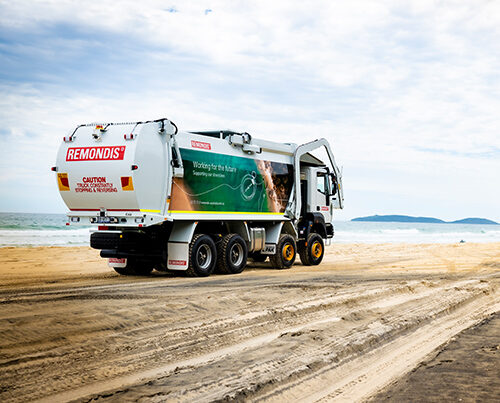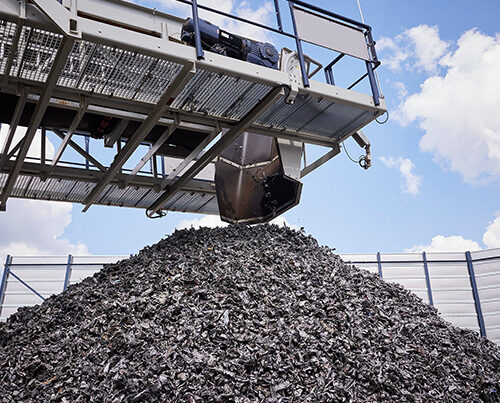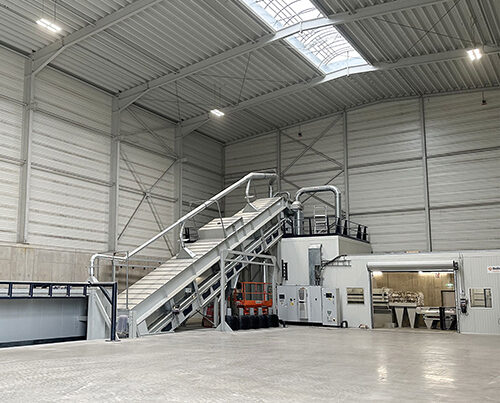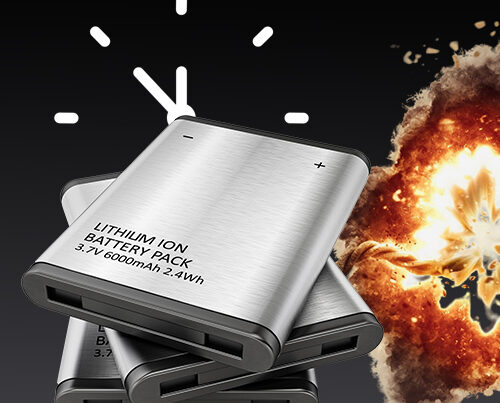It was a subject of silent films: Charlie Chaplin, for example, made the most of the comedic potential of nitrous oxide (N2O) in 1914 when he made his film ‘Laughing Gas’. Back then, the gas was used as an anaesthetic by dentists. This gas is still being used in a variety of medical fields to help relieve anxiety – and is becoming an ever more popular recreational drug in large cities.
Besides the health risks that this gas has for the – mostly young – people using it, the laughing gas cartridges have become the next challenge for the recycling sector. On the one hand, there is a lack of well-established processes and capacities to recycle them and, on the other, partially full cartridges are exploding at waste incineration plants and damaging the facilities. The repair costs have already reached a seven-figure sum.
Recycling firms across Germany are sounding the alarm
The same complaints can be heard across the country, whether it be in Hamburg, Berlin or Frankfurt. In Frankfurt, for example, FES Frankfurter Entsorgungs- und Service GmbH – a public private partnership between the City of Frankfurt and REMONDIS – recovered around 4,000 gas cartridges (either from separate collections or removing them from volumes of waste) in 2023 to reduce the risks and potential damage to its treatment facilities. The recycling costs amount to tens of thousands of euros.
These cartridges are primarily sold on the market as a product for charging reusable whipped cream dispensers. For the most part, they are sold separately – noticeably in kiosks, late night shops and vending machines in city centres. And there is also an impressive number of these cartridges available online.

These cartridges are made of steel or aluminium and are filled with at least eight grams of gas. If they are completely empty, then the obvious route for them to take is to a metal recycler. If they still contain some gas, however, they pose a considerable risk to the employees working at the recycling firms and their vehicles as well as to waste incineration plants as they can explode and cause serious damage. Especially as they are often carelessly thrown away into general rubbish bins or public litter bins where they are collected by the city-cleaning teams and taken for thermal treatment.
Following a survey of its members in the spring of 2024, ITAD (an interest group representing thermal waste treatment plants in Germany) reported that the damage caused each month to the glass panels of the furnace inspection windows had tripled within less than a year since the beginning of 2023. The employees operating the facility need this window to be able to see into the furnace. While there were very few cases where it could clearly be proven that this damage was caused by nitrous oxide cartridges, the large number of cartridges found in the bunker following the incineration processes is a clear indication.
Well-established recycling systems, limited capacities
There are, in fact, well-established recycling systems in place for such gas cartridges, explained Deimantas Herrmann from REMONDIS Industrie Service in Bramsche. At the moment, the facility where he works receives hundreds of these cartridges every month. There, if required, they are emptied manually and the gas incinerated to prevent it impacting on the climate; the cartridges are cut up and sent in two parts to metal recycling businesses for further processing.
The cartridges that arrive at the plant were disposed of incorrectly and some of them were not licensed or labelled in accordance with the rules and regulations. This means that the finder has to cover the waste management costs. This may be the city-cleaning office or private individuals who pick up the cartridges from public parks or private grounds as well as customs and the police who confiscate such cartridges.
Partially filled cartridges that have been thrown away into recycling bins or recycling sacks also pose a considerable risk, especially when these volumes of waste are sorted by machine. Deimantas Herrmann stressed: “In my opinion, Germany doesn’t have the capacities in place to handle and treat all these old cartridges correctly at the moment.”
Some local authorities have found themselves having to respond to this new challenge and the advice that they have given their local residents differs quite considerably: some say the cartridges should be put in the recycling bins or recycling sacks, others recommend that they be taken to the local household waste recycling centre (HWRC). And then a few others have said that they should not be handed in to the HWRCs but to local gas bottle retailers. All in all, an unsatisfactory situation for everyone involved – despite the clear regulations that are actually in place.
“In my opinion, Germany doesn’t have the capacities in place to handle and treat all these old cartridges correctly at the moment.”
Deimantas Herrmann, REMONDIS Industrie Service in Bramsche
A deposit or a ban?
Thomas Drewer works at REMONDIS’ Southwest regional company and his responsibilities include the company’s activities at the waste incineration plants in Frankfurt and Mainz that are jointly owned by the public and private sectors. At the moment he is, first and foremost, calling on the users of these products not to simply discard the cartridges as litter. “In the end,”, Drewer explained, “we will find a solution that uses either a deposit scheme to make it more attractive for people to hand them in or takes the product’s health risks into account – as they have done in the Netherlands and the UK – and effectively remove them from the market.”
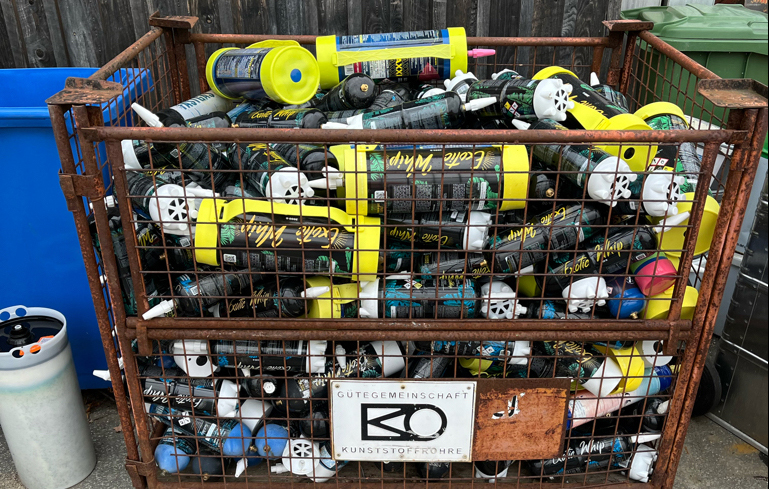
Laughing gas
Laughing gas, also known as nitrous oxide (N2O), is a colourless, non-flammable gas with a slightly sweet odour. It is, however, highly reactive and can ignite or explode when exposed to high temperatures and certain substances.
The gas is used in a variety of fields, in some cases mixed with oxygen. Laughing gas is used in medical settings as an anaesthetic and analgesic, in particular in dentistry and childbirth. In industry, it acts as a propellant in aerosol cans and as a charger for reusable whipped cream dispensers. This is how final consumers are able to get hold of the product. Furthermore, it is also used as a fertiliser in the agricultural sector.
Laughing gas is bad for our climate. It is a powerful greenhouse gas and is around 265 times more damaging to our climate than carbon dioxide. Laughing gas remains in the atmosphere for over 100 years, which means that it contributes towards both global warming and the depletion of the ozone layer.
Laughing gas poses a risk to health when people inhale it. It can lead to feelings of dizziness, drowsiness and nausea. If inhaled in high concentrations, it can result in loss of consciousness and oxygen deficiency, both of which can cause brain damage. Regular use of laughing gas can cause major health problems and damage a person’s respiratory tract and lungs.
Laughing gas prevents the body absorbing vitamin B12 – a substance that is important for our blood cells and nervous system. And it poses additional risks when used as a recreational drug at parties: it can lead to loss of balance, thromboses, embolisms and heart attacks. There is also an increased risk of the person having an accident as a result of them feeling drowsy or disoriented.
Find out more here (German).
Image credits: image 1: Shutterstock: Daniel Holking; image 2: Shutterstock: NeydtStock; image 3, 4: © REMONDIS; image 5: Freepik: starline







